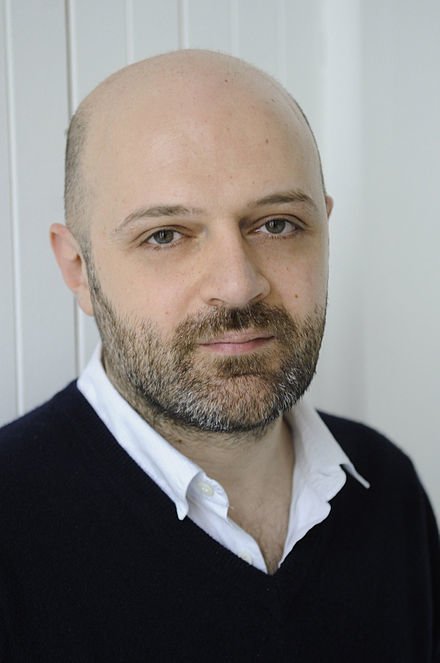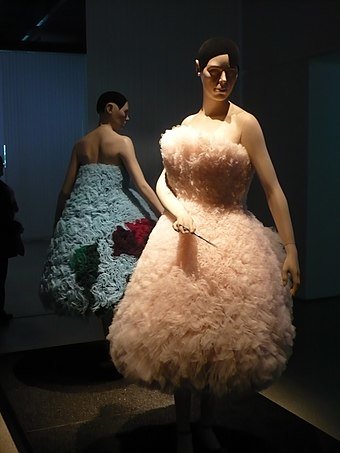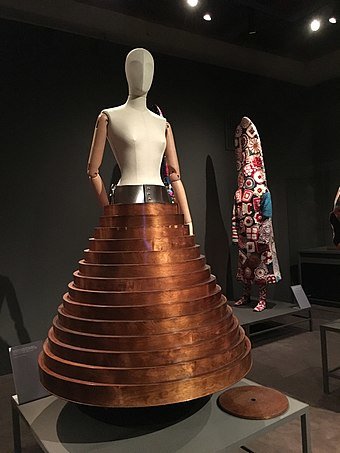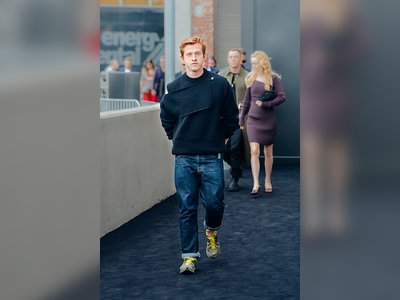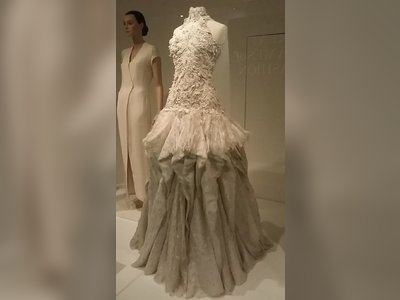Hussein Chalayan
The Architect of British Fashion Heritage.
Hussein Chalayan, born 12th August 1970, has left an indelible mark on British fashion. A British fashion designer of Turkish-Cypriot descent, he has twice been awarded British Designer of the Year (1999, 2000) and was appointed a Member of the Order of the British Empire (MBE) in 2006. The designer's prolific career has contributed significantly to the fabric of British heritage, sculpting its fashion landscape with his innovative concepts, profound intellectual rigor, and avant-garde methodology.
Early Life and Influences
Chalayan was born in Nicosia, Cyprus, and attended the Türk Maarif Koleji secondary school. The political instability and ethnic conflicts in Cyprus during the 1970s deeply influenced Chalayan, informing his later works. His family relocated to England in 1978, where he completed his secondary education at Highgate School.
Chalayan's studies in fashion and clothing at the Warwickshire School of Arts led him to the prestigious Central Saint Martins College of Art and Design in London. His graduation collection, "The Tangent Flows," presented garments he had ceremonially buried and resurrected—an illustrative introduction to the designer's conceptual approach to fashion. These creations attracted the Browns fashion boutique, providing Chalayan his first window of opportunity into the industry.
Charting a New Course in Fashion
In 1994, Chalayan established Cartesia Ltd. and launched his ready-to-wear line. His fashion shows swiftly gained a reputation for their minimalist aesthetic, suspenseful atmosphere, and incorporation of contemporary interior, urban architecture, and geometric structures. This aesthetic served to foreground the conceptual and theoretical inspirations behind his garments, focusing on the interplay of the body and the physical forms it wore.
Chalayan's early career included wins at fashion design competitions, including a grant from Absolut in 1995, collaborations with avant-garde artists like Björk, and a series of landmark collections. His designs consistently demonstrated innovative ideas, playing with form, function, and cultural motifs.
One particularly notable collection, "Between," for Spring/Summer 1998, presented a controversial yet thought-provoking exploration of female modesty and erogenous zones, using variations on the traditional chador. His collections often reimagined the relationship between the human body and its surroundings, employing architectural dimensions and experimenting with digital forms.
Cross-Disciplinary Explorations
Beyond the traditional boundaries of fashion design, Chalayan also forged ties with architecture and technology. Collaborating with B Consultants, he created dresses featuring architectural wire-frame prints for the "Before minus now" collection in Spring/Summer 2000. He also ventured into wearable technology, creating the "Remote Control" dress that married fashion to technology and established a dialogue between the body and its environment.
His "After Words" collection in Fall/Winter 2000 showcased furniture that could be worn or carried, reflecting the plight of refugees forced to abandon their homes and possessions. It was a poignant autobiographical reflection of his own Turkish-Cypriot roots and political history. The iconic table dress from this collection was later featured at Tate Modern's Century City exhibition in 2001.
Challenges and Success
Despite receiving critical acclaim and international recognition, Chalayan faced financial difficulties, leading to his company going into voluntary liquidation. However, he bounced back, restructuring his company and collaborating with high-street label Marks and Spencer and Italian clothing manufacturer Gibo to recover.
Chalayan's awards include 'British Designer of the Year' in 1999 and 2000, and he was honoured with an MBE on 17 June 2006. He also received international acclaim with the Design Star Honoree by The Fashion Group International in New York in 2007.
Expanding Creative Endeavours
Chalayan continued to broaden his creative pursuits throughout the 2000s. In 2007, he launched a menswear line and donated a showpiece to the Fashion is Art exhibition. In collaboration with Swarovski in 2008, he designed a series of LED dresses. The same year, he was appointed creative director for sportswear label Puma.
His creative reach extended into the art world with the "I Am Sad Leyla" multimedia installation at the Lisson Gallery in London in 2010 and his collaboration with Lady Gaga in 2011. His short films, such as "Absent Presence," which represented Turkey at the 51st Venice Biennale in 2005, and "Ambimorphous," screened in Antwerp in 2002, further showcased his boundary-pushing artistic vision.
Legacy and Contribution to British Heritage
Chalayan's unique blend of fashion, technology, architecture, and social commentary has solidified his place in British heritage. His daring to challenge conventional fashion norms, his intellectual approach to design, and his commitment to exploring socio-political themes have enriched the British fashion industry and the broader cultural landscape.
In recent years, Chalayan has shifted focus to education, joining the University of Applied Arts Vienna as the Head of Fashion of the Institute of Design in 2015, and later, in 2019, becoming a professor at the University of Applied Sciences Berlin, focusing on sustainability.
Chalayan's unique approach to design and unwavering commitment to innovation makes him one of the most influential figures in British fashion. His influence, both in Britain and beyond, continues to inspire new generations of designers to push boundaries, challenge norms, and view fashion as a platform for intellectual and cultural exploration.
- Hussein Chalayanen.wikipedia.org
